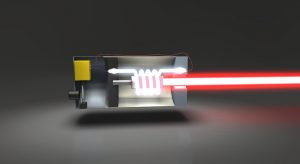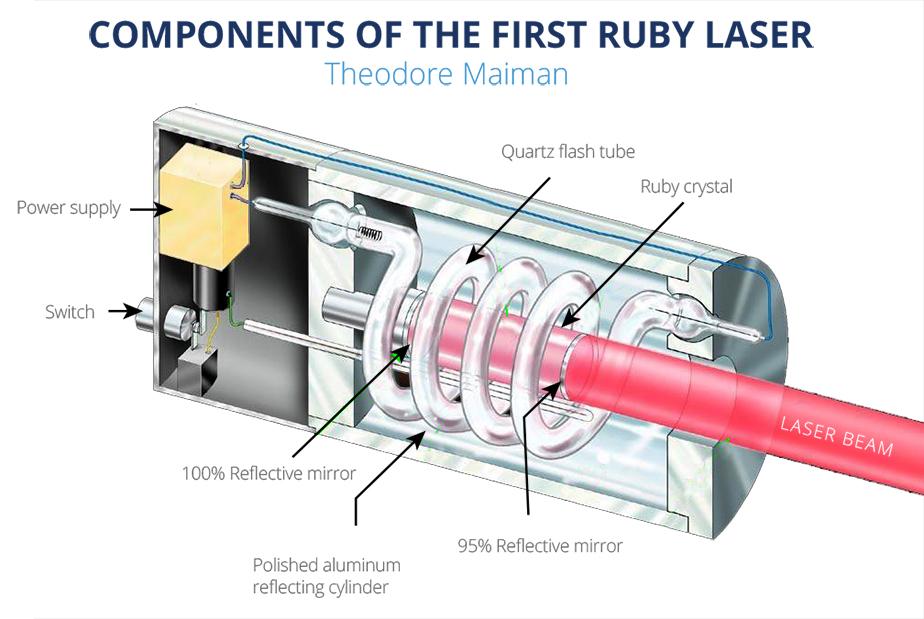
On the 16th of May, 1960 Theodore Maiman achieved what many already tried to do, but failed: to fire a laser! And for this reason, every year on this day we celebrate the International Day of Light. The achievement was important for many reasons:
- First; lasers are all around us today and many technologies depend on them. From communication, to medical applications, to sensing, to coding, to material processing, to defense, and the list goes on. All of that started on the 16th of May, 1960.
- Second: Theodore Maiman did this by pure perseverance, by understanding the topic very well and by doing this without having a lot of research money compared to his rivals from, for example, Bell Labs.
- Third: Maiman did not get the recognition he deserved. His rivals from Bell Labs took the credit and they got Nobel prizes. Also the main patent did not go to Maiman which subsequently made somebody else extremely rich. Maiman’s name doesn’t appear in many books and most people think that Charles Townes, Arthur Schawlow and Gordon Gould are the first laser inventors.

A schematic of the world’s first laser.
To start: lasers are so common, that the word laser is used as a word. Instead it’s an acronym for: Light Amplification by Stimulated Emission of Radiation. The stimulated emission was already theorised by Albert Einstein, but it took many years before people could finally put it to practise. Townes and Schawlow presented an idea on how to achieve laser light, but even though people refer to this as the start of the laser era, their idea never succeeded. To the frustration of Maiman, who did succeed with his version of a laser, based on a ruby crystal.

Left: the world first laser based on a ruby crystal. Right: Theodore Maiman with his laser.
After the success of Maiman, Bell Lab scientists successfully built several versions of lasers, such as the Nd:YAG laser and the Helium-Neon laser: still in use till this day. Bell Labs used the date of their first laser success to celebrate ‘the first laser in history’: hereby completely ignoring Maiman’s work. Townes got his Nobel prize in 1964 for the invention of the laser. Schawlow got the Nobel prize in 1981.
Recognition in getting a patent was also not given to Maiman (however, he did get a patent, but not the one that made the most money). The laser patent went to Gordon Gould, who played a clever trick to achieve the patent by attracting many investors to win the court case on the patent. Gould then spent 30 years fighting court cases with companies that tried to steal his invention.
Did any credit go to Maiman? Yes. Unfortunately not the Nobel prize, however, he was nominated three times for it. He did get the Japan prize: known to be the Nobel prize of the East. And funny enough, a blown up version of his laser appeared in a James Bond movie, where Bond made a daring escape from the deadly laser light.
And the term ‘death ray’ comes from a journalist that interviewed Maiman soon after his discovery. Laser light has become stronger over the years: enough to shoot down a plane from the sky. But it is far from a death ray, with limitless applications and most we use on a daily basis without knowing it. All of this thanks to a bright engineer named Theodore Maiman.

An image from the James Bond movie, showing a blown-up version of the first laser.
